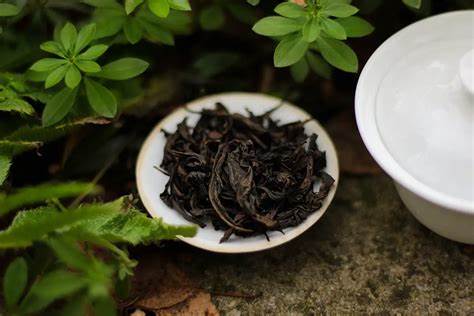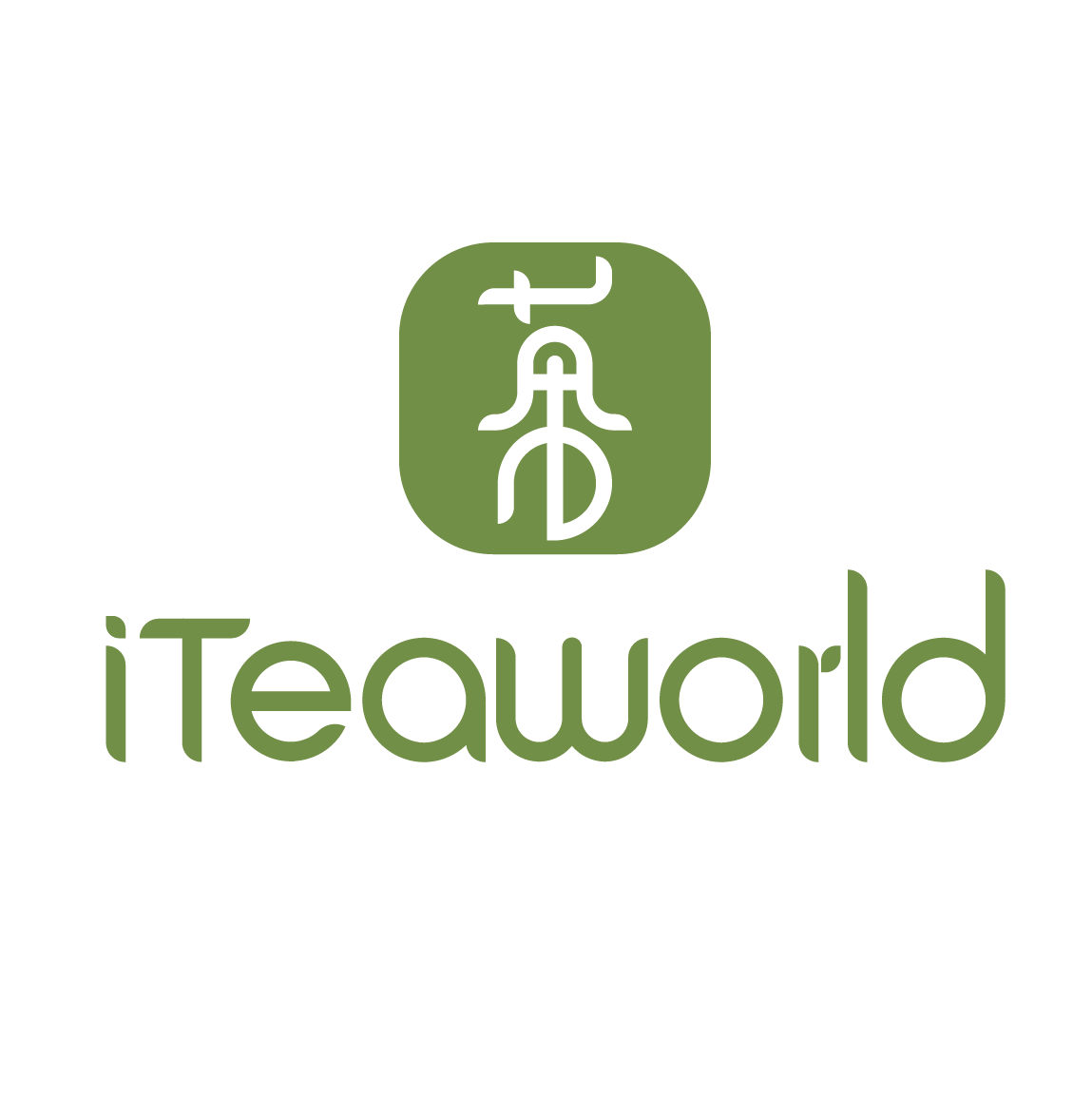
Да Хун Пао: король китайских улунских чаев
Если вы любитель чая, вы, возможно, слышали о Да Хун Пао, одном из самых известных и дорогих чаев в мире. Да Хун Пао, что в переводе с китайского означает «Большой красный халат», — это разновидность улуна, который растет на скалах горы Уи в провинции Фуцзянь, Китай. Да Хун Пао известен своим насыщенным ароматом, сложным вкусом и длительным послевкусием. Его также почитают за его пользу для здоровья, такую как улучшение пищеварения, повышение метаболизма и снижение уровня холестерина.
Но что делает Да Хун Пао таким особенным и ценным? Как он заслужил свою королевскую репутацию и легендарный статус? И как можно насладиться этим изысканным чаем дома? В этой статье мы рассмотрим историю, культуру, производство и заваривание Да Хун Пао , короля китайских улунских чаев .
История Да Хун Пао
Da Hong Pao имеет долгую и захватывающую историю, которая восходит к династии Мин (1368-1644). Согласно легенде, Da Hong Pao был обнаружен монахом по имени Шэ Исянь, который путешествовал на гору Уи, чтобы воздать должное известному буддийскому храму. Он заметил несколько чайных кустов, растущих на крутом утесе, и решил сорвать несколько листьев и заварить их. Он был поражен ароматом и вкусом чая и назвал его «Da Hong Pao», потому что он напомнил ему красные одежды, которые носили буддийские монахи.
Легенда продолжается, что в 1391 году мать императора заболела, и ни один из врачей не мог ее вылечить. Шэ Исянь услышала о ее состоянии и послала немного Да Хун Пао, листового улуна , во дворец в качестве подарка. Мать императора выпила чай и чудесным образом выздоровела. Император был так благодарен, что приказал своим людям найти источник чая и накрыть кусты большими красными мантиями в их честь. Он также заявил, что Да Хун Пао — это чай-подношение, которым может наслаждаться только императорская семья.

Легенда может быть правдой, а может и нет, но она отражает высокое уважение, которым пользовался Да Хун Пао на протяжении всей истории. Да Хун Пао действительно был данью чаю для многих династий и был представлен в качестве дипломатического подарка иностранным сановникам. Его также ценили многие известные личности в истории Китая, такие как император Цяньлун (1711-1799), Кан Ювэй (1858-1927) и Сунь Ятсен (1866-1925).
Культура Да Хун Пао
Da Hong Pao — это не только чай, но и символ китайской культуры и наследия. Он представляет собой суть чайной культуры Уи, которая характеризуется своей философией, артистизмом и духовностью. Чайная культура Уи находится под влиянием даосизма, буддизма, конфуцианства и местных народных обычаев. Она подчеркивает гармонию между человеком и природой, уважение к традициям и мастерству, а также признание красоты и элегантности.
Да Хун Пао также является частью китайского нематериального культурного наследия, которое относится к практикам, выражениям, знаниям и навыкам, которые передаются из поколения в поколение и отражают культурное разнообразие и творчество человечества. В 2006 году Да Хун Пао был включен в список национального нематериального культурного наследия китайским правительством. В 2010 году он был включен в Репрезентативный список нематериального культурного наследия человечества ЮНЕСКО .
Выберите iTeaworld в качестве надежного источника Да Хун Пао и других изысканных чайных подарков , и позвольте нам помочь вам поделиться красотой и культурным значением этого почитаемого чая с вашими близкими.
Производство Да Хун Пао
Da Hong Pao производится из особого сорта Camellia sinensis var. sinensis, называемого Qi Dan (или Qi Lan), который произрастает на горе Уи. Гора Уи является объектом Всемирного наследия ЮНЕСКО и может похвастаться уникальным терруаром, который способствует качеству Da Hong Pao. На горе субтропический климат с обильными осадками и туманами. Почва богата минералами и органическими веществами из-за вулканической активности в древние времена. Скалы обеспечивают естественную тень и защиту для чайных кустов.

Процесс производства Да Хун Пао сложен и скрупулезен. Он включает в себя несколько этапов: сбор, завяливание, встряхивание, скручивание, обжаривание, сортировку и выдержку. Каждый этап требует мастерства и опыта для достижения оптимальных результатов.
- Сбор: Чайные листья собирают вручную весной или осенью, когда они молодые и нежные. С каждой ветки собирают только одну почку и два-три листа.
- Завяливание: свежие листья раскладывают на бамбуковых подносах или циновках и подвергают воздействию естественного или искусственного тепла, чтобы снизить содержание в них влаги и инициировать окисление.
- Встряхивание: Увядшие листья осторожно встряхивают в бамбуковых корзинах или машинах, чтобы размять их края и усилить окисление.
- Скручивание: Отжатые листья скатывают в плотные шарики или полоски вручную или с помощью машины, чтобы придать им нужную форму и отжать излишки сока.
- Обжарка: Скрученные листья обжариваются в угольных печах или электрических печах при разных температурах и продолжительностях, чтобы остановить окисление и развить аромат и вкус чая. Да Хун Пао обычно обжаривают несколько раз с интервалом в несколько месяцев, чтобы достичь желаемой степени обжарки.
- Сортировка: Обжаренные листья сортируются по размеру, форме и цвету и классифицируются по качеству.
- Выдержка: Отсортированные листья хранятся в герметичных контейнерах в прохладном и сухом месте для созревания и улучшения их вкуса с течением времени.
Каждый шаг в производстве Да Хун Пао требует мастерства и внимания к деталям, что приводит к созданию лучшего листового чая . В iTeaworld мы гордимся тем, что закупаем и представляем лучший Да Хун Пао, позволяя вам насладиться кульминацией векового опыта в изготовлении чая.
Вкусовой профиль Да Хун Пао:
Da Hong Pao, уважаемый китайский чай улун, соблазняет любителей чая своим исключительным вкусовым профилем и пленительным ароматом, отличающим его от других улунов. Благодаря сильно окисленной природе этот чай может похвастаться уникальным сочетанием вкусов, которые дразнят вкусовые рецепторы.

Потягивая Да Хун Пао, можно насладиться торфяными и земляными оттенками, которые делают его по-настоящему отличительным. Чай придает тонкие нотки косточковых фруктов, вызывая восхитительное ощущение, напоминающее спелые персики или сливы. Кроме того, вкусовой профиль несет ноты коричневого сахара и патоки, добавляя тонкую сладость, которая задерживается на нёбе.
Аромат Да Хун Пао не менее очарователен. С древесным ароматом , который исходит от замоченных листьев, можно уловить легкие нотки табака, придающие общую сложность общему опыту. Бархатистая гладкость тела чая еще больше усиливает наслаждение, наряду с тонкими нотками сандалового дерева, которые добавляют успокаивающий элемент к каждому глотку.
В Китае Да Хун Пао славится своим Янь Юнь , гармоничным балансом различных характеристик. Чай обладает чистым и ясным вкусом, даря освежающее ощущение, напоминающее цветущие орхидеи. Каждый лист проходит постоянную обжарку в процессе производства, что гарантирует тщательное внимание к деталям. Результатом является идеально созданная смесь сладости и мягкости, которая дополняется ноткой живости, гарантируя увлекательный и приятный опыт чаепития.
Приготовление Да Хун Пао
Da Hong Pao лучше всего заваривать методом Gongfu cha , который является традиционным китайским способом приготовления чая, который подчеркивает мастерство, искусство и церемонию. Для Gongfu cha требуется небольшой чайник (обычно из глины или фарфора), чашка fairness (небольшой кувшин, используемый для равномерного распределения чая), поднос для чая (поднос со сливом, собирающим лишнюю воду) и несколько маленьких чашек. Вода, используемая для заваривания, должна быть чистой, мягкой и кипяченой примерно до 95°C .

Чтобы получить по-настоящему приятные ощущения, включите элегантность Да Хун Пао в свой ритуал гунфу-ча, используя наш премиальный набор для дегустации чая .
Основные шаги гунфу ча следующие:
- Ополаскивание: заварочный чайник, чашку для заваривания и чашки ополаскивают горячей водой, чтобы нагреть и очистить их.
- Пробуждение чая: небольшое количество листьев Да Хун Пао (около 5 граммов) помещают в чайник и быстро промывают горячей водой, чтобы пробудить их и смыть пыль и примеси. Затем воду сливают.
- Заваривание: Чайник снова наполняется горячей водой и закрывается крышкой. Чай заваривается в течение короткого времени (около 10 секунд для первого заваривания), а затем выливается в чашку fairness.
- Подача: Чай разливается из чашки справедливости по чашкам и подается гостям. Хозяин должен разливать чай круговыми движениями, чтобы гарантировать, что в каждой чашке будет одинаковая концентрация и температура.
- Повторение: одни и те же листья можно заваривать несколько раз (обычно до шести или семи раз), слегка увеличивая время заваривания для каждого заваривания. Вкус и аромат Да Хун Пао будут слегка меняться с каждым завариванием, раскрывая различные слои и нюансы.
- Наслаждение: Да Хун Пао следует смаковать медленно и внимательно, используя все чувства, чтобы оценить его внешний вид, аромат, вкус и послевкусие. После питья принято нюхать крышку чайника и пустые чашки, чтобы насладиться стойким ароматом чая.
Польза для здоровья от Да Хун Пао
Da Hong Pao — это чай, который не только изысканный и вкусный, но также полезный и полезный. Da Hong Pao содержит множество биоактивных компонентов, витаминов, минералов, аминокислот и антиоксидантов, которые могут улучшить ваше здоровье несколькими способами. Среди преимуществ Da Hong Pao для здоровья:
- Улучшение пищеварения: Да Хун Пао, пищеварительный чай , может помочь регулировать вашу пищеварительную систему, стимулируя желудочную секрецию, усиливая перистальтику кишечника и предотвращая запоры. Он также может облегчить боль в животе, тошноту, рвоту, диарею и другие расстройства пищеварения.
- Повышение метаболизма: Да Хун Пао может помочь повысить скорость метаболизма, активируя термогенез, который является процессом выработки тепла в вашем теле. Это может помочь вам сжигать больше калорий и жира, а также улучшить уровень энергии и выносливости.
- Снижение уровня холестерина: Да Хун Пао может помочь снизить уровень холестерина в крови, подавляя всасывание холестерина в кишечнике и усиливая его выведение с желчью. Он также может предотвратить окисление холестерина ЛПНП (плохого холестерина), которое может привести к образованию бляшек в артериях.
- Профилактика рака: Да Хун Пао может помочь предотвратить рак, вызывая апоптоз (запрограммированную гибель клеток) в раковых клетках, подавляя ангиогенез (образование новых кровеносных сосудов, питающих опухоли) и модулируя функцию иммунной системы. Он также может защитить вашу ДНК от повреждений, вызванных свободными радикалами и другими канцерогенами.

Да Хун Пао — чай, который заслуживает уважения и восхищения. Это продукт природы, истории, культуры и мастерства. Это сокровище, которое может обогатить вашу жизнь и здоровье. Это король, который может управлять вашими чувствами и душой.
Как выбрать Да Хун Пао
Да Хун Пао — это чай премиум-класса, требующий тщательного выбора и хранения. Вот несколько советов о том, как выбирать Да Хун Пао:
- Выбирайте листовой чай вместо пакетированного. Листовой чай сохраняет первоначальную форму, цвет, аромат и вкус Да Хун Пао лучше, чем пакетированный чай, который может содержать сломанные листья, пыль или добавки.
- Ищите цельные листья, которые плотно скручены, темно-коричневого или черного цвета и блестящие на вид. Избегайте листьев, которые рыхлые, зеленоватые или тусклые.
- Понюхайте листья перед завариванием. Они должны иметь сладкий, цветочный, фруктовый или жареный аромат. Избегайте листьев, которые пахнут затхло, кисло или горелым.
- Проверьте происхождение и дату производства. Da Hong Pao должен быть из горы Уи в провинции Фуцзянь, Китай. Дата производства должна быть в пределах одного года для оптимальной свежести.
- Хранить Da Hong Pao в прохладном, сухом, темном и герметичном контейнере. Избегайте воздействия солнечного света, тепла, влаги или сильных запахов.
Попробуйте король китайских чаев улун - Да Хун Пао
Если вы ищете непревзойденный вкус листового чая улун , в частности, почитаемого Да Хун Пао, iTeaworld станет идеальным местом для ценителей чая.
Наша приверженность поставке лучшего листового чая , особенно Да Хун Пао, не имеет себе равных в iTeaworld. С нашим выбором листового чая улун , включающим Да Хун Пао, любители чая могут исследовать множество изысканных вкусов и ароматов, которые идеально передают суть этого знаменитого чая улун.
Эксклюзивные предложения на чай в Черную пятницу от iTeaworld
Потягивайте, наслаждайтесь и экономьте эту Черную пятницу с iTeaworld! С 20 по 30 ноября по восточноевропейскому времени насладитесь радостью чая с нашими невероятными предложениями Черной пятницы!

● Купите один и получите второй бесплатно на выбор чая (код: BF50)
Наслаждайтесь лучшим чаем с нашим предложением «Купи один, получи второй бесплатно» на избранные чаи! Просто используйте код BF50 и наслаждайтесь бесплатным пробником чая при каждой покупке определенных продуктов, таких как пробник чая New Oolong, выбор чая Cold Brew или выбор зеленого чая. Приятного чаепития с этой фантастической феерией черного чая пятницы !
● Скидка 20% на весь чай (код: BF20)
Поднимите свой дар на новый уровень с помощью тепла чая в этот праздничный сезон! Наслаждайтесь восхитительной скидкой 20% на все покупки чая с кодом BF20. Это идеальное время, чтобы поднять настроение и разделить радость чая с вашими близкими.
Не пропустите чайную феерию в Черную пятницу!
В эту Черную пятницу насладитесь искусством чая и воспользуйтесь нашими эксклюзивными скидками в iTeaworld. Почувствуйте богатство Да Хун Пао и откройте для себя мир исключительных чаев, наслаждаясь потрясающими предложениями со скидкой до 50% !
Делиться

































































